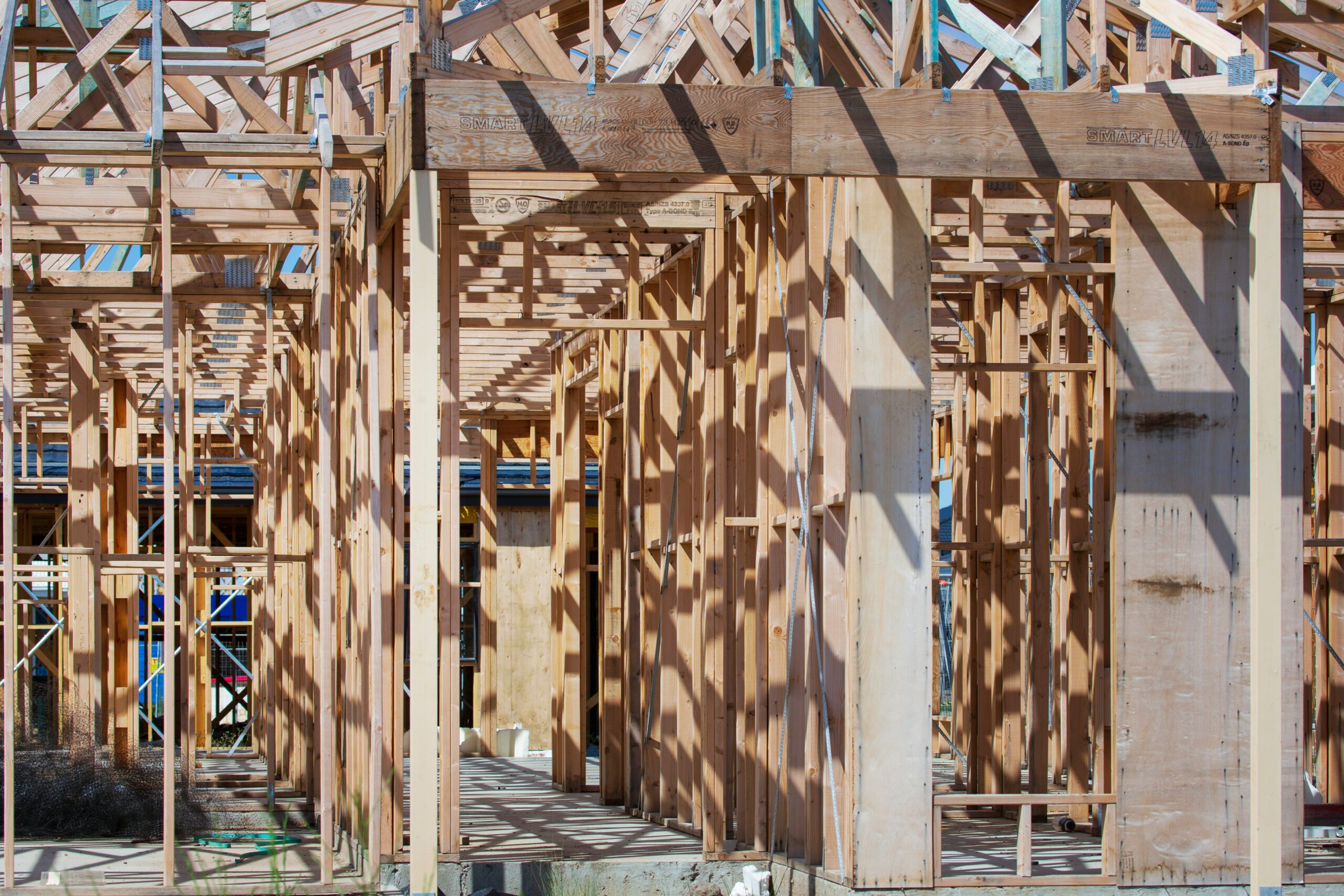
Timber frame construction is becoming increasingly popular among UK contractors, prized for its speed, sustainability, and cost-efficiency. In Scotland, it has long been the dominant method of housebuilding, accounting for the majority of new homes. Yet despite the industry’s growing confidence in timber, the insurance market remains notably more cautious.
At Champion Insurance Group, we specialise in construction insurance and have extensive experience arranging cover for timber frame projects. In this article, we explore why these contracts are so difficult to insure, and why they often fall outside the scope of a contractor’s annual insurance policy.
Understanding the risks of timber frame construction
Despite its many advantages, timber frame construction presents a range of risks that can make insurers hesitant to offer standard cover. These include:
- Fire Risk
Timber is inherently combustible. During the build phase, incomplete fire protection systems and exposure to hot works increase the likelihood of ignition and rapid spread. - Water Damage
Timber frames are highly susceptible to moisture. Without a sealed building envelope, exposure to rain or high humidity can cause warping, mould, and costly delays. - Site Security
Construction sites using timber are attractive targets for theft and vandalism. Without robust security measures, this increases the risk of fire and material losses. - Structural Concerns
Some insurers remain cautious around the long-term performance of timber, especially in taller or more complex buildings, despite adherence to regulations.
Scotland leads the way — But the insurance market still lags behind
Timber frame is already well established in Scotland, where more than 85% of new homes are built using this method. It’s fast, efficient, and widely accepted in the region’s construction sector.
However, even in Scotland — where timber is the norm — the insurance market remains conservative. Large-scale developments or those with complex risk profiles still face challenges, particularly during the construction phase. Whether the project is in Edinburgh or Manchester, the same issues apply.
Why contractors’ annual policies often fall short
Many contractors assume their annual contract works or combined liability policy will automatically extend to timber frame builds. In our experience, this is rarely the case.
- Exclusions and Conditions: Annual policies often exclude timber frame projects or impose strict limitations, particularly on buildings above a certain height or value.
- Insurer Reluctance: Where insurers are willing to provide cover, it usually comes with stringent requirements and higher premiums.
- Notification Requirements: Many insurers require timber frame projects to be declared in advance. If this step is missed, there’s a real risk of cover being invalidated
Because of these limitations, we usually recommend that timber frame contracts be carved out and insured on a project-specific basis.
A project-specific insurance policy provides the tailored protection these contracts demand. It also gives all stakeholders, from developers and contractors to funders, peace of mind that the risks have been properly managed.
Shared risk through scheduled placements
Because of the elevated risks associated with timber frame projects, it’s increasingly common for insurers to share the exposure via a “scheduled placement”. In these arrangements, multiple insurers each take a percentage of the contract works policy — spreading the risk while enabling higher sums insured. This can make it easier to secure comprehensive cover for high-value or complex builds, but it also requires detailed underwriting information and experienced broker coordination.
At Champion Insurance Group, we regularly structure and place these schedules, leveraging our market relationships to secure balanced terms and competitive pricing.
Champion Insurance Group: Experts in timber frame insurance placements
At Champion Insurance Group, we’ve helped insure timber frame schemes across the UK – from individual homes to large-scale developments.
Our team adds value by:
- Carrying out in-depth risk assessments and identifying insurer concerns early
- Recommending practical risk mitigation strategies, such as enhanced security and fire controls
- Structuring scheduled placements across multiple insurers where required
- Presenting projects professionally to underwriters to secure competitive terms
- Ensuring insurance policies are fully aligned with contracts and funder requirements
We work closely with specialist insurers who understand modern methods of construction (MMC) and are willing to engage with timber frame risks — where the right risk management is in place.
Get the right advice from the start
Timber frame construction is efficient, cost-effective, and increasingly widespread. But it presents unique insurance challenges that can’t be addressed with a one-size-fits-all approach.
If you’re planning a timber frame development, early engagement with a specialist broker is essential. At Champion Insurance Group, we provide clear, practical advice and bespoke solutions — including scheduled placements — tailored to the specific needs of your build.
Talk to our construction insurance experts today to ensure your timber frame project is protected from the ground up.
📞 03330 430 430
🌐 www.ChampionInsure.co.uk/construction



